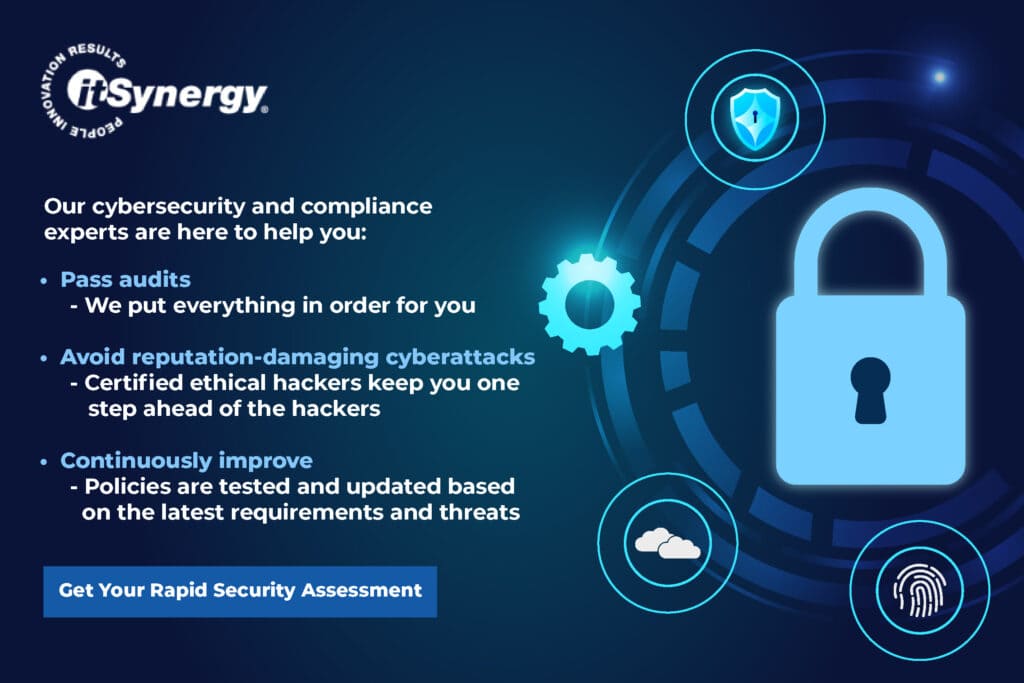
Meet Your New Network Security Champion: NIST vs. CIS
March Madness spawns millions of armchair experts and water cooler conversations in workplaces, restaurants and homes each year. Network security doesn’t generate the same interest. Bring it up in conversation and people probably wish it was March so they could change the subject to familiar territory.
We get it. Thinking about network security isn’t how you want to spend your day, not even the work-focused time. But a basic understanding of the frameworks available to your business matter. An overly complex framework will protect you, but you’ll lose efficiency.
Take a moment to digest the basics of network security frameworks and your 2 main options. It will cost you less time than you invest in filling out a bracket. Speaking of brackets …
How Network Security Frameworks Are Like Brackets and Why You Need One
Brackets structure the NCAA tournament and show teams their potential path to the championship. A network security framework guides your organization along a path to better security and compliance. Like a team in the tournament, your path could be rocky, or you might sail through every game.
Let’s dig into your options and figure out your ideal cybersecurity and compliance solution – one that avoids the near upsets (aka business disruptions).
NIST vs. CIS: Who Wins the Head-to-Head Matchup?
What is the NIST framework?
The framework from the National Institute of Standards and Technology (NIST) details best practices designed to reduce and manage cyber risk. At a high level, you have 5 Framework Core Functions: Identify, Protect, Detect, Respond, Recover. Each Function is broken down into:
- 23 categories
- 108 subcategories
The level of detail in NIST makes it incredibly thorough – unfortunately, that can also be a drawback.
NIST compliance is all or nothing
You either hit each requirement and win NIST compliance or you don’t. This makes it overwhelming for any business that doesn’t have a full-time compliance team. Even if you do have a full-time team dedicated to regulatory standards, you might not want to diligently focus on NIST.
Some guidelines may be outdated
As of this writing in 2022, the last NIST revision occurred in 2018. That 4-year gap is an eternity in technology. The guidelines will still apply, but won’t capture nuances, best practices, or new technologies that have emerged since 2018.
NIST box score
Pros:
- Extremely detailed – meeting all category and subcategory compliance decreases risk
- Published by the federal government and adopted by governmental agencies and regulatory bodies
- No charge to use the framework or to access materials on NIST’s website
Cons:
- Last revision was in April 2018
- Overly complex for small businesses that don’t need to satisfy all requirements
- All-or-nothing design – you’re either NIST compliant or you’re not

What is the CIS framework?
The Center for Internet Security, Inc. (CIS) is a DC-based nonprofit and has earned global recognition for its security benchmarks, guidelines and frameworks.
Implementation Groups offer an easy way in
Unlike NIST, CIS isn’t all or nothing. Implementation Groups (IGs) give you flexibility to select the right level of compliance for your organization.
18 critical security controls
CIS is broken into 18 security controls. Each control has safeguards, categorized by implementation group. As a result, it’s succinct without sacrificing security or productivity.
For instance, control 1 is “Inventory and Control of Inventory and Assets.” It has 5 safeguards, but if you’re aiming for IG1, you’re only asked to follow 2 of the 5 safeguards.
CIS box score
Pros:
- CIS released an update to the framework in 2021
- Rightsize your compliance by choosing the Implementation Group that meets your needs
- Free-to-use framework
Cons:
- Tools and guides to help you achieve compliance may carry costs
- Not published by the government, some federal partners may still prefer NIST
And the framework champion is …
CIS is more digestible and flexible. The safeguards are vigorous and can be tailored to meet your needs. With CIS, you stop making hedged statements, like “I align, but out of these 112 subcategories, there are 17 I’m opting out of. So, I’m sort of NIST compliant.” You simply say, “I’m CIS IG1 compliant.” If you’re a larger organization, you can choose to meet all the safeguards for IG2 or IG3.
NIST isn’t going away
NIST can make sense for larger, enterprise-sized organizations that have an entire team focused on compliance. For everyone else, an update could introduce levels or a new methodology for determining compliance.
But right now, it makes sense to at least start a conversation about CIS with your IT expert.
Have a Team Ready To Implement Your Network Security Game Plan
Having the right framework is like having a great game plan. Laying it all out on paper tells players who needs to do what. It’s up to the players to execute the plan and win.
A slam dunk for cybersecurity and compliance
Work with us to settle on the network security framework that makes sense for your business. Then our team of IT and cyber experts will carry out the plan for you.





